Click to view our Accessibility Statement or contact us with accessibility-related questions

















Finding your groove: getting into vinyl with Audio-Technica

search
close
Sort by: Newest
keyboard_arrow_downtimwat
8
Dec 7, 2023
Wonderful article, James, ideal for those considering their first jump down the rabbit hole.
Like many technical pursuits (mechanical keyboards, watches, musical instruments), vinyl playback can go very deep...and very expensive.
While it isn't universally true, I have found anecdotally that you often get what you pay for in vinyl playback.
I'm old enough to have grown up with my father's Garrard, then after many purchases found my way to a VPI setup, a tube phono stage, and a Dynavector MC cartridge. While that got spendy fast (even buying used from Audiogon), it yielded an exponentially better listening experience than the consumer stuff I had transitioned through. And of course, you need transducers (speakers) that are able to put these improvements on glorious display.
I wonder how many new entrants into vinyl will stick with it once they hit their head on the various inconvenience factors - shorter playing time before they have to intervene, non-portability, being beholden to the album format (rather than the per-song a la carte perspective). I personally suspect that if the new user doesn't have the downstream to really put the glory of vinyl on display (in other words, amp and speakers of that quality), vinyl won't "stick" as a permanent option.
But I've been wrong frequently, and I may be wrong here again.
Great article, I enjoyed it a lot.
Tim

storyboardtech
514
Keyboard Club Member
Dec 9, 2023
timwatThanks for the kind words Tim, and the support. I'm love writing in this space, and I value this community. I don't worry about the future of vinyl, as it's a standalone music form and the equipment can last for 50+ years in most cases. I think that as long as people value tactile interaction with their products, it's going to be valued.
Naqoqatsi
3
Dec 7, 2023
Thanks for the AT history, quite interesting. One suggestion, If you are going to put a VTA picture it would be valuable to explain what’s going on for people new to turntables.

storyboardtech
514
Keyboard Club Member
Dec 9, 2023
NaqoqatsiI hear you, but man. It's SUCH a complicated subject, and no picture does it justice. I had a few that I thought would explain more, but they tend to raise more questions than offer answers. In honesty, I don't know that I would have even covered it if it weren't in the name of the product.

DarthWader
0
Dec 7, 2023
You're soooo full of shit! The B&O Beogram 3000 was NOT a tangential turntable! If you're going to bullshit people, at least get your facts straight! Just saying.

storyboardtech
514
Keyboard Club Member
Dec 7, 2023
DarthWaderThere were two models named Beogram 3000. You might be thinking of the other one. This is the one I owned. https://www.beoworld.org/prod_details.asp?pid=289
(Edited)

Evshrug
4145
Keyboard Club Member
Dec 9, 2023
DarthWaderYou did not pass the fact check or the vibe check; go straight to jail, do not pass Go, do not collect $200 😂

MonetsChemist
73
Dec 6, 2023
A very good article, James, about what seems to be a very fine turntable. Those AT-VMN95 cartridge and stylus combos get uniformly good press; I would like to add a couple of comments for your consideration.
First, the stylus shape - the AT-VMN95C is a conical stylus which has a round contact patch with the sidewalls of the record groove. The 95E has an elliptical stylus which makes an elliptical contact patch (higher and narrower). The other, fancier / more expensive stylus shapes have a contact patch that looks more like a tall, thin line. The nice thing about the conical stylus shape is that it's very forgiving of tracking mis-alignment, whereas the thinner the contact patch, the more sensitive the stylus is to this kind of mis-alignment. This kind of mis-alignment causes greater distortion, making the playback sound bad. So why not just go with the cheap conical stylus then? Because the thinner contact patches, when properly aligned, do a better job of tracing the high frequencies, making playback of cymbals and what-not sound much more realistic.
It's relatively easy to align your cartridge to minimize the mis-alignment. This article on the Vinyl Engine enthusiast site is worth reviewing https://www.vinylengine.com/cartridge-alignment-protractors.shtml
Second, VTA - the thing you are really trying to do is to match the orientation of the contact patches on the stylus to the orientation of the cutting head on the lathe that made the record masters. This orientation is called "stylus rake angle" or SRA. There is supposed to be a standard SRA, I think around 92 degrees. The stylus shapes that attempt to contact the record sidewall as a line are more sensitive to misaligned orientation - for example, if the stylus contact line is oriented at say 85 degrees and the lathe cut at 92 degrees, then the orientation alignment is off by 92 - 85 = 7 degrees. Once again, the conical stylus is more forgiving of SRA misalignment, since its contact patch is circular, but it's also the shape that is least like the shape of the cutting head, so it's going to do a more approximate job of tracing the groove no matter how carefully it is aligned.
Getting SRA properly aligned is difficult. It requires a good USB microscope and a lot of patience, and some stylus profiles are extremely hard to see clearly, even with good equipment and lighting. There is a nice discussion thread on the Vinyl Engine enthusiast site on SRA alignment that shows some pictures and explains the ideas https://www.vinylengine.com/turntable_forum/viewtopic.php?t=64477
For sure I agree with your comments about "is the first time user going to want to mess around with this kind of tweaking". However, the flip side of that argument is that tweaking costs nothing (unless the tweaker breaks the equipment) and can noticeably improve the sound. The other point that's important to keep in mind is that spending more money on a flashier stylus for the AT-VMN95 cartridge isn't necessarily money well spent without getting the cartridge as well-aligned as possible.
Anyway, all of the above isn't meant to criticize your fine article; thanks again for writing it!

storyboardtech
514
Keyboard Club Member
Dec 6, 2023
MonetsChemistFantastic response MC! So well thought out. These are all excellent points and great background info on what I might be guilty of oversimplifying for the sake of readability. I truly appreciate your comments and I legit laughed out loud when you said "tweaking costs nothing unless the user breaks the equipment." Hilarious.
I appreciate the time and thought you put into your response! Keep it up!
Stihl
10
Dec 6, 2023
Thanks James. I wholeheartedly agree with your opinions. I’ve been listening to the VTA for about a month and love it. Been thinking of upgrading the stylus but so far the one that came with it sounds great. I’ve got a Pro-ject Debut Pro sitting in my living room unboxed but am having such a good time with the VTA I haven’t made the switch. If you can a review of the Debut PTO would be appreciated.
(Edited)

storyboardtech
514
Keyboard Club Member
Dec 6, 2023
StihlThanks so much Stihl! It's definitely a fantastic turntable. A friend and I were talking about the article and he cautioned me to not make it out to be JUST for beginners. I want to be clear, I don't consider myself a beginner at all, and I use mine daily in my office. It is a stellar piece of audio equipment, and a real winner.
Thanks again for the comments, I value your feedback for sure!
PRODUCTS YOU MAY LIKE
Trending Posts in Audiophile

Hauntednsk
E-MU Teak Repair - Any Experience?
Hello, I am wondering if anybody has any experience contacting E-MU support, sending them headphones for repair, or getting them back fixed. Can anybody share any experience? I have been emailing them for a while now, but nobody has responded. Thank you.
Dec 29, 2024

murphdc
pc38x still has audio coming through with the volume dial turned all the way down
Finally got my hands on the pc38x. I mostly wanted to try this headset because of all the good things i heard about it. Out of the box i wasn’t really impressed. My 50 dollar astros were just as loud if not louder. After setting up an EQ on dolby access i got them sounding a little better. But one thing that really bothers me is the volume dial on the headset. When i turn it all the way down there’s so much audio still coming through, like the headset is turned up 10-20%. Is this normal?
Dec 28, 2024

gigolosheydrabad
Call Boy Job Part Time
Looking for flexible work hours and an exciting opportunity? A call boy job part time role in Hyderabad could be perfect for you with a platform like This position allows you to provide...
Dec 28, 2024

MrChiSox
My little room work in progress.
It's not done, I apologize for the mess. Health issues have put this on hold. It's a small room and I'm likely to sell off my KEF 104.2 loudspeakers and some other gear after surrendering the living room to my wife after her patience of 35 years. She deserved her own little sanctuary.
Dec 26, 2024
magica
What lead/cable do i need?
i own a Drop + EPOS PC38X Gaming Headset and i need a new cable that connects the headset to the computer. i dont know what its called and i cant work out what to look for on amazon etc. could someone please help me with this
Dec 21, 2024

MrChiSox
New addition to the stable.
I made the decision to take advantage of the $600. price on the HiFiMan Arya Stealth, here pictured with the Meze 109 Pro. I think 2025 is going to be a really uneventful year so far as new purchases. I've also upgraded my Fiio BTR7 to the newly released BTR17 and I purchased the Earmen stack which consists of Amplifier, Linear PS, DAC & Streamer.
Dec 19, 2024
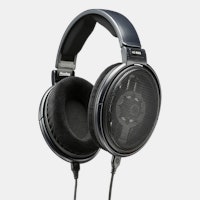
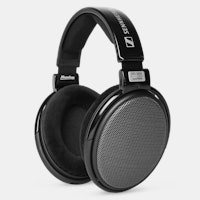
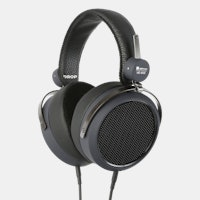
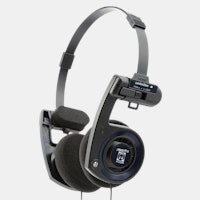
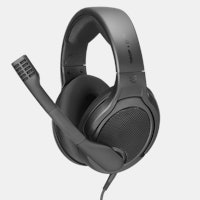
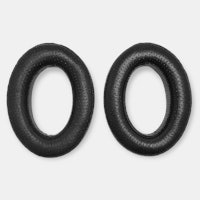
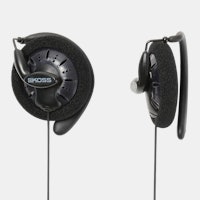
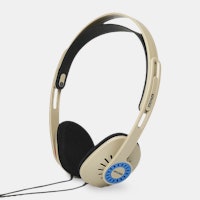
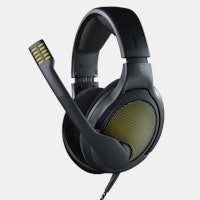
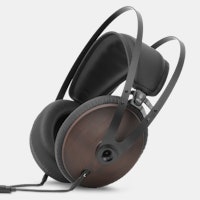





Altered Carbon A few weeks ago, DROP sent me the DROP+Audio-Technica Carbon VTA Turntable to review, specifically to see how it sized up as an option for folks new to vinyl. They gave it to me no-strings attached, and my views are my own. They’ve just asked me to give it a try and share my thoughts here. So, here’s how I want to do this. I want to compare the Carbon VTA to the AT- LPW40WN, the turntable it’s based on, then to the LP3, which I’ve owned for years and is in the same price range. And I’d like to do all of it through the lens of getting started in the hobby. If I were new to vinyl today, and seeking an entry level system from Audio-Technica that I could grow with, would I choose the Carbon VTA or the AT-LP3 and why? When I received the Carbon VTA, I didn’t open it right away. I put it in the car, drove to Berwyn, and sat it down in front of Tom. As a dedicated Audio-Technica dealer, I was curious to see his reactions to a collaboration between AT and another company, and what he thought of it. Thankfully, it was a slow night at the record shop, and we were able to assemble, test it thoroughly and come away with some conclusions. I’ve been using the Carbon VTA for the last 4 weeks, and I have to say… I’m really impressed. Let’s start with the roots It’s important to know that the Carbon VTA is very (and I mean VERY) similar to the Audio-Technica LPW40WN, which currently retails for $379 on Crutchfield. They have identical dimensions, and other than DROP’s darker wood finish, they look very similar. As you look closer however, the differences are there, and all of them favor the Carbon VTA. While both have a carbon fiber tone-arm, vibration-reducing plinth, adjustable feet and identical built-in phono preamp, the LPW40WN has a cheaper, plastic tone arm lift and base that is pretty off-putting to me.
Verdit: Carbon VTA vs. LPW40WN As we looked over the Carbon VTA, Tom kept commenting that he couldn’t fathom how this was less expensive than the LPW40WN (I think I had mentioned the $349 sale price that the Carbon is often listed at) and that in every way he could see, it was an improvement. I totally agree. Even the inclusion of the carbon-fiber record brush was a really nice touch and sets it above the 40. If you’re considering the Carbon VTA, I would wholeheartedly recommend it over the LPW40WN. And now for something completely different That brings me to my AT-LP3, which since has been updated to the AT-LP3XBT, a $299 bluetooth model with a better stylus than before (but still WAY below the one on the Carbon VTA). The LP3XBT, like the Carbon VTA, has a built in phono preamp, is solidly built throughout (although it is unabashedly plastic, no wood-looking finish here) and most importantly, it’s fully automatic, rather than manual. What does that mean? It means that to play a record on the LP3XBT, you push a button, and when the side finishes, the tonearm returns to its rest and the record stops. On a manual turntable like the Carbon VTA the tonearm will continue to sit on the record, silently grooving along, until you remember to go lift the tonearm, return it to its rest and stop the record. It’s not a big deal for most people, and there’s certainly some charm to manually lowering the needle onto the record each time. But it is a thing. And depending on your usage, a big thing. If you have a turntable in your business, and don’t have time to be popping back and forth to start or stop a record, having an automatic turntable is probably the right path for you. If you are reasonably close to your turntable, and like to be there when that needle hits the vinyl… manual’s probably a good bet. I just want folks to think about it. It definitely changes the experience, and in the case of automatic, is more approachable to newbies. Bluetooth is pretty cool, so that is a real feature on the LP3XBT. Especially if you have Bluetooth headphones, want to put some Bluetooth speakers wherever the heck you want without having to worry about wires, or live/work with people that hate your music (or the volume you listen at). The Carbon VTA does not have Bluetooth, so if that’s a dealbreaker for you, know that. Lastly, I mentioned it before, but the $69 AT-VMN95E in the Carbon VTA is dramatically better than the $39 AT-VMN95C, which while an improvement on the previous LP3 cartridge is not, how do you say, “good?” The Carbon wins here, with a cartridge that you should not need to upgrade until it wears out, whereas with the LP3XBT needle, I’d want to replace on day one. Verdict: Carbon VTA vs. LP3XBT This totally comes down to aesthetic and usage. If you are looking for a sleek, killer entry level turntable and manual works for you? The Carbon VTA is a fantastic choice. If you want that fully automatic functionality, don’t mind spending the $50 you saved on a new cartridge, and like the clean, plastic-y goodness of the LP3XBT’s design… it’s a wonderful turntable, and I highly recommend it. In this case, both turntables win, and honestly, I’d love to see a second DROP + Audio-Technica collaboration where they improve the LP3XBT to provide DROP customers with a manual and a fully automatic option. Ya hear me, DROP? And maybe in red? I hope that this has been informational, entertaining, and helpful. I value all of your feedback and appreciate the reads. It warms my heart to be a part of this community and every one of you is so cool and unique! Please let me know what entry-level setups you rocked (or are still rocking) and share pictures! Thanks for reading and until next time, keep finding the stories in everything you do. Best, James (@Storyboardtech)